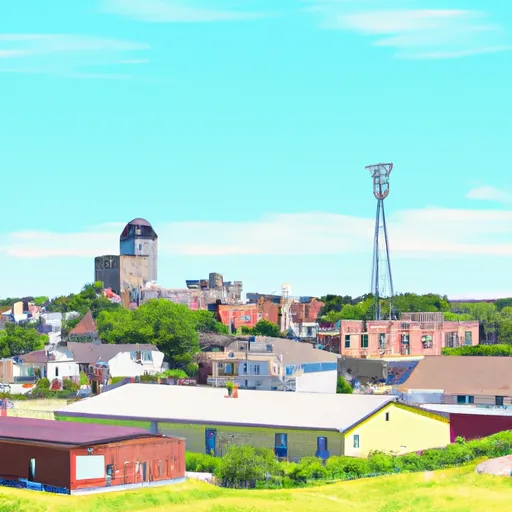-
 Snoflo Premium
Snoflo Premium
Get unlimited access to all our content
With no Ad interruptions! - Start Your Free Trial Login with existing account
Tama
Eden Index
Climate
7.4
•
Recreation
3.4
•
Community
2.2
•
Safeguard
4.7/10

Tama, Iowa is a small city located in Tama County, in the central part of the state. The climate in Tama is considered continental, with warm summers and cold winters. Average temperatures range from around 20°F (-6°C) in January to about 80°F (27°C) in July. Precipitation is fairly evenly distributed throughout the year, with an average of around 36 inches (91 cm) annually.
Tama is situated near the Iowa River, which provides opportunities for various outdoor activities. The river's hydrology constituents offer opportunities for boating, kayaking, and fishing. Anglers can find a variety of fish species in the river, including walleye, bass, and catfish. Additionally, there are several parks and recreational areas in and around Tama, such as the Tama-Toledo Aquatic Center and Cherry Lake. These spaces offer opportunities for swimming, picnicking, hiking, and camping.
Overall, Tama, Iowa provides a pleasant climate with diverse outdoor recreation opportunities, making it an attractive destination for nature lovers and outdoor enthusiasts.
What is the Eden Index?
The Snoflo Eden Index serves as a comprehensive rating system for regions, evaluating their desirability through a holistic assessment of climate health, outdoor recreation opportunities, and natural disaster risk, acknowledging the profound impact of these factors on livability and well-being.
Climate Health Indicator (CHI): 7.4
Tama receives approximately
902mm of rain per year,
with humidity levels near 83%
and air temperatures averaging around
9°C.
Tama has a plant hardyness factor of
5, meaning
plants and agriculture in this region thrive during a short period during spring and early summer. Most
plants will die off during the colder winter months.
By considering the ideal temperature range, reliable water supplies, clean air, and stable seasonal rain or snowpacks, the Climate Health Indicator (CHI) underscores the significance of a healthy climate as the foundation for quality living.
A healthy climate is paramount for ensuring a high quality of life and livability in a region, fostering both physical well-being and environmental harmony. This can be characterized by ideal temperatures, reliable access to water supplies, clean air, and consistent seasonal rain or snowpacks.
Weather Forecast
Streamflow Conditions
Iowa
Area Rivers
Iowa
Snowpack Depths
Iowa
Reservoir Storage Capacity
Iowa
Groundwater Levels
Recreational Opportunity Index (ROI): 3.4
The Recreational Opportunity Index (ROI) recognizes the value of outdoor recreational options, such as parks, hiking trails, camping sites, and fishing spots, while acknowledging that climate plays a pivotal role in ensuring the comfort and consistency of these experiences.
Access to outdoor recreational opportunities, encompassing activities such as parks, hiking, camping, and fishing, is crucial for overall well-being, and the climate plays a pivotal role in enabling and enhancing these experiences, ensuring that individuals can engage in nature-based activities comfortably and consistently.
Camping Areas
| Campground | Campsites | Reservations | Toilets | Showers | Elevation |
|---|---|---|---|---|---|
| Thousand Hills State Park | None | 862 ft | |||
| Macon Co Park | None | 873 ft | |||
| Lake of the Ozarks Military | None | 768 ft | |||
| McGowen Rec Area | 12 | 857 ft | |||
| Lake of the Ozarks State Park | 183 | 773 ft | |||
| Katy Roundhouse Campground | None | 601 ft | |||
| Long Branch State Park | None | 841 ft | |||
| Lake Fisher | 6 | 840 ft | |||
| Thomas Hill Reservoir - Hwy T Campground - MDC | 10 | 753 ft | |||
| Rothwell Park | None | 858 ft |
Catastrophe Safeguard Index (CSI):
The Catastrophe Safeguard Index (CSI) recognizes that natural disaster risk, encompassing floods, fires, hurricanes, and tornadoes, can drastically affect safety and the overall appeal of an area.
The level of natural disaster risk in a region significantly affects safety and the overall livability, with climate change amplifying these risks by potentially increasing the frequency and intensity of events like floods, fires, hurricanes, and tornadoes, thereby posing substantial challenges to community resilience and well-being.
Community Resilience Indicator (CRI): 2.2
The Community Resilience Indicator (CRI) recognizes that education, healthcare, and socioeconomics are crucial to the well-being of a region. The CRI acknowledges the profound impact of these elements on residents' overall quality of life. By evaluating educational resources, healthcare accessibility, and economic inclusivity, the index captures the essential aspects that contribute to a thriving community, fostering resident satisfaction, equity, and social cohesion.

